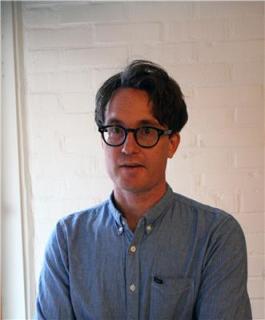Oct 6 2015
The targets for lower emissions of carbon dioxide from Europe's basic industries are out of reach, without urgent introduction of innovative carbon dioxide mitigation technologies.
 Johan Rootzén. Photo: Christian Löwhagen
Johan Rootzén. Photo: Christian Löwhagen
Researchers at Chalmers University of Technology draw this conclusion after several years of research into carbon-intensive industry in Europe.
“There is an urgent need to demonstrate and implement carbon capture and storage, CCS, and other carbon dioxide mitigation technologies”, says Johan Rootzén, who recently presented his doctoral thesis at Chalmers University of Technology. “While this will involve major investments in primary production, our results suggest that there will only be marginal impacts on costs and prices in the end-use sectors.”
The debate about how to reduce emissions of carbon dioxide often focuses on emissions from generation of electricity and transport. Johan Rootzén has researched another major source of emissions: energy-intensive heavy industry in Sweden and EU, such as oil refining, and production of cement and steel.
“There is a lack of strategy from political actors about how emissions from these industries should be reduced, even though these industries are responsible for a tenth of emissions of carbon dioxide in Europe and nearly 20 percent in Sweden”, says Johan Rootzén. “At the same time Sweden and the EU have a target in which emissions should be almost zero by 2050.”
Making production more energy efficient and changing to fossil free fuels are two of the alternatives which are often mentioned, but when it comes to the production of cement and steel, it is only possible to tackle a limited amount of emissions with these measures, due to the method of production. One way to reduce emission would of course be to reduce production, but major investments in housing, infrastructure and renewable energy are foreseen over the coming decades which are likely to result in a continued high demand for bulk products like steel and cement.
“The clock is ticking”, says Johan Rootzén. “Plants within heavy industry have very long lifespans, so implementation of new technology and new solutions take a long time. There are only a few investment cycles left to year 2050. If the EU is serious about reducing emissions by 80-90 percent by 2050, then the issue of how to finance the development and implementation of innovative process technology must be brought to the table now.”
In Chalmers' Division of Energy Technology, like many other universities and institutes in the world, different technologies for mitigation of carbon dioxide emissions, including carbon dioxide capture and storage, have been developed over the years. A number of questions on how these technologies can be implemented remain. It is especially urgent to establish large-scale demonstration of the entire CCS chain; capture, transport and storage.
“It is easy to say that we should achieve zero emissions, but this requires that we take the issues seriously and are given the opportunity to demonstrate new technologies; CCS as well as other mitigation options. There are indeed question marks concerning CCS, and large investments are required in CCS as well as in other measures. Yet, if society decides not to try then we limit the room for manoeuvring in the future. Our research suggests that without a shift in technology then refineries, steel and cement industries alone are going to be the source of up to a quarter of the emissions in 2050”, says professor Filip Johnsson who has been leading the Chalmers research.
In his thesis, Johan Rootzén also concludes that a shift in technology to a less carbon intense production of steel and cement would only have a marginal effect on the final price of a car or a house, despite the large investments required in the production step of the primary materials. This is because the cost of these materials is such a small part of the cost of the final product.
He now hopes that he and his colleagues' research will lead to politicians in both Sweden and Europe taking the decision to pave the way for CCS and other mitigation technologies, which could seriously reduce emissions from energy-intensive industry.
“This is one of the major critical issues we must deal with. The choice of path that we make in Sweden and Europe can, of course, only affect the global development so much. But we, who have to a large extent built up our industries and economies on coal, oil, steel and cement have, in my opinion, a responsibility to lead the way and develop measures which can show the rest of the world that it is possible to achieve ambitious emission reduction targets”, says Johan Rootzén.